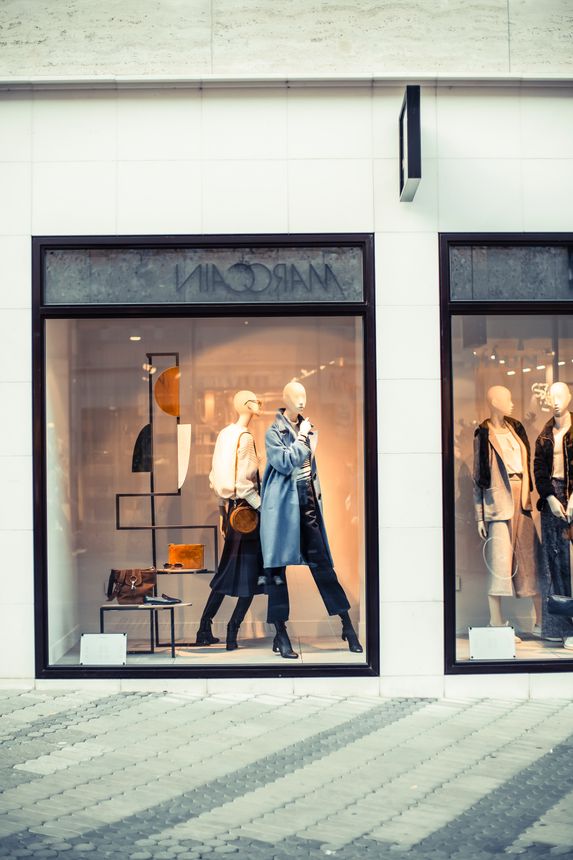Diego Baronchelli of French sportswear brand Salomon, talks to Lydia Christie, Head of Retail at Howard Kennedy, about the challenges of balancing wholesale vs D2C, how to use data to enhance customer experience and Breaking New what the future holds for outdoor sportswear in 2025.
Founded in 1947, Salomon has dominated the outdoor sportswear market for almost seven decades from its French Alps base in Annecy. 2024 saw it becoming the first outdoor sports brand to open a shop on Paris’s famous Champs-Elysées, while 2025 will see it sponsoring the Winter Olympics in Italy.
You’ve had an impressive career journey before joining Salomon, working at brands including Adidas, Ikea, The North Face and Vans. Could you share some learnings from your previous roles?
There are always two common denominators in the way I look at things wherever I’m working. First and foremost, I’m very much obsessed with consumer engagement, consumer satisfaction,
and making sure that any time we do something, whether that’s in the store, online or in the office, we are thinking of the consumer first. The second thing is always thinking about our staff within the organisation, so taking decisions that are made for the betterment of our own team, and not necessarily always purely about business. Another thing to add is that I am always looking to protect the brand and elevate it as much as I can. And that’s where both of these things come in. People say retail is about detail, but actually, I think retail is about people.
Salomon has seen remarkable success in recent years, particularly with its innovative product lines and expanding store presence. How has the brand managed to stay ahead in the competitive outdoor market?
I only joined the company two months ago, so I can’t take too much credit, but I think that Salomon as a brand has been very good at changing with the times and staying ahead of the
curve. When it was founded in 1947, it sold ski bindings. Since then, it has transformed to add more ski equipment, then diversified into other sports, like running. At the same time, it’s continued to transform the retail experience for the customer too. If you think about it, the way we shop has changed drastically over the last two decades. Now we shop from our phones in our pockets! You don’t need to go to a store to buy a product anymore. That’s why I think the
bricks and mortar stores have become so important, as they allow you to experience the brand, they are experiential rather than transactional. It’s a way of socialising and gathering a community into a physical space. Innovation is the key. We have to ask ourselves, what should we do today to answer tomorrow’s needs?
Can you share some insights into the consumer behaviour trends you’ve observed in the European D2C market, and how Salomon is leveraging these insights to enhance its offerings?
One trend that we are seeing is that a lot of consumers are buying our very technical, outdoor products and incorporating them into their day to day urban life – especially our hiking shoes.
We’re seeing it specifically in Asia and Europe, and a little in North America too. In today’s market, brands need to balance both D2C and wholesale channels to thrive. How can brands navigate the
challenges of these channels, and what strategies have proven most effective in promoting your full array of products and pushing more expensive items? Firstly, I like to see it as an opportunity,
not a challenge. I believe that retail can only exist in an ecosystem with wholesale. It is critically important to have a clear marketplace segmentation strategy.
This isn’t about keeping products for one specific channel, but instead about the way you present your product to the consumer. For example, a true runner will always go to their specialist store
of choice. When I was at Vans, we knew skateboarders didn’t shop in our store – they went to their neighbourhood store. So you need to have your product in there too. In a multi brand environment, it’s important to transform your customer into a brand lover. You need to engage, entertain and educate them, to convert them into a loyal customer.
How can brands ensure a seamless and engaging customer experience across these platforms, and what role does technology play in enhancing this experience?
I always use the same analogy to answer this. If you’re travelling somewhere, and someone
asks you how the flight was, the best answer that you can give is that it was uneventful.
It’s the same with a retail experience. You want to go to a store, go online, and get the product you want. And if it’s not there, you want an easy way to get it sent to the store or delivered to your house. It’s not necessarily about the most advanced technology to enhance the experience. You just want a seamless experience. You want it to be uneventful.
How can brands leverage data from both D2C and wholesale channels to better target prospective consumers and enhance their shopping experience?
It’s so complex today, especially due to privacy concerns. We are very careful about how we use data because we first and foremost need to protect our customers’ privacy. It’s the macro data that we look at to make meaningful decisions, rather than anything too granular. Now, how do you leverage wholesale data versus retail data? It’s a bit of a difficult question, which I prefer not to answer yet!
Looking at 2025 and beyond, what are your predictions for the future of the outdoor and sportswear industry? How is the brand preparing to meet the evolving demands of consumers?
We are always looking at the marketplace and our competitors. At Salomon we have all the ammunition to believe that we’re going to continue to grow, and we’re going to continue to build on the success of the previous year. We want to be a leader in our own market. So we’re a French brand. We want to win in France. We’re a European brand. We want to win in Europe. When I speak about France, I’m talking about Paris. This year we were the very first outdoor brand to open a store on the Champs-Elysées, which was amazing. We are an official sponsor of the Winter Olympics next year in Cortina, so we want to be very present there and in Milan too.
Finally, what piece of advice would you offer a new retail startup seeking to get D2C right?
You need to be very clear about who your customers are and very sure about your product. It’s always easiest to start small, learn, then take the next step. It’s better to get things right at the very beginning, with baby steps, than do one big step and get it wrong. Retail is about investment: start small, learn from your consumer, and scale from that.


/Passle/5ae9851e7bae7607b4016f56/MediaLibrary/Images/2025-11-04-14-17-12-271-690a0ae868499c4238aff598.jpg)

